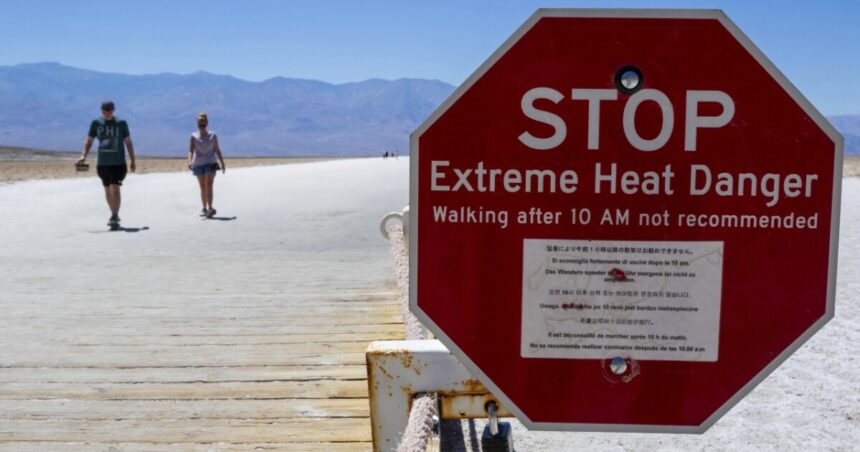A scorching, triple-digit heat wave that has placed millions of Americans under an excessive heat warning from the National Weather Service has been linked to at least two recent deaths in national parks.
The most recent fatality occurred in Death Valley National Park, situated on the border of California and Nevada in the Mojave Desert, where the temperature soared to 128 F over the Fourth of July weekend.
Officials at the park informed various sources that one motorcyclist succumbed to heat exposure while visiting the park on Saturday, with another individual hospitalized in Las Vegas. The identities of both victims have not been disclosed.
These visitors were among a group of six motorcyclists traversing the Badwater Basin area in the blistering heat. The other four members of the group received treatment at the scene for heat-related ailments, according to officials.
The cumbersome safety gear worn by the motorcyclists, combined with the unbearable heat, made it extremely challenging for them to cool down while navigating through the park.
Given the extreme temperatures, emergency medical helicopters were unable to respond. These aircraft typically cannot operate safely when temperatures exceed 120 F, due to the air molecules’ expansion that favors broader wings or blades.
Death Valley is renowned as a “land of extremes,” notorious for being the driest spot in North America and registering the highest temperature ever recorded on Earth at 134 F in July 1913. Some experts contest this claim, suggesting that the actual record was 130 F in 2021 – a record that meteorologists believe could be equaled this week.
The park issued warnings to visitors in person and on its website about the severe summer heat, advising them to avoid hiking after 10 a.m., wear appropriate attire, stay hydrated, and seek shade regularly.
Earlier, park officials reported the demise of a 69-year-old hiker in Grand Canyon National Park, despite several attempts to revive him proving unsuccessful. While the cause of death remains unconfirmed, park rangers cautioned against hiking the inner canyon during daytime hours in the scorching summer heat, where exposed trails can surpass 120 F even in the shade.
Copernicus, a part of the European Union’s space program, declared on Monday that global temperatures continued a 13-month streak of record heat.
Heat records were shattered over the holiday weekend on the West Coast, with Salem, Oregon reaching a historic high of 103 F and Las Vegas setting a Sunday record of 120 F.
Most of the Western U.S., where many national parks are located, remained under excessive heat warnings or watches on Monday. Heat advisories extended from the West to the Southeast as the heat wave rolled into another week.
Even regions of higher elevations, like Lake Tahoe shared by California and Nevada on their northern border, received rare heat advisories.
The soaring temperatures pose a distinct danger to national parks, where millions of annual visitors are frequently isolated and cellular service for seeking assistance is largely unavailable.
Conversely, a recent analysis by a Los Angeles-based personal injury law firm revealed that drowning is the most common cause of death in national parks, followed by vehicular accidents.
The Centers for Disease Control and Prevention outlined that heat-related illnesses can manifest differently based on symptoms. If you find yourself outdoors in extreme heat, remember to stay hydrated and seek help if you or someone with you experiences dizziness, headaches, nausea, confusion, or a rapid pulse.
Related Story: Wildfires rage in California as heat wave bakes much of the Western US





